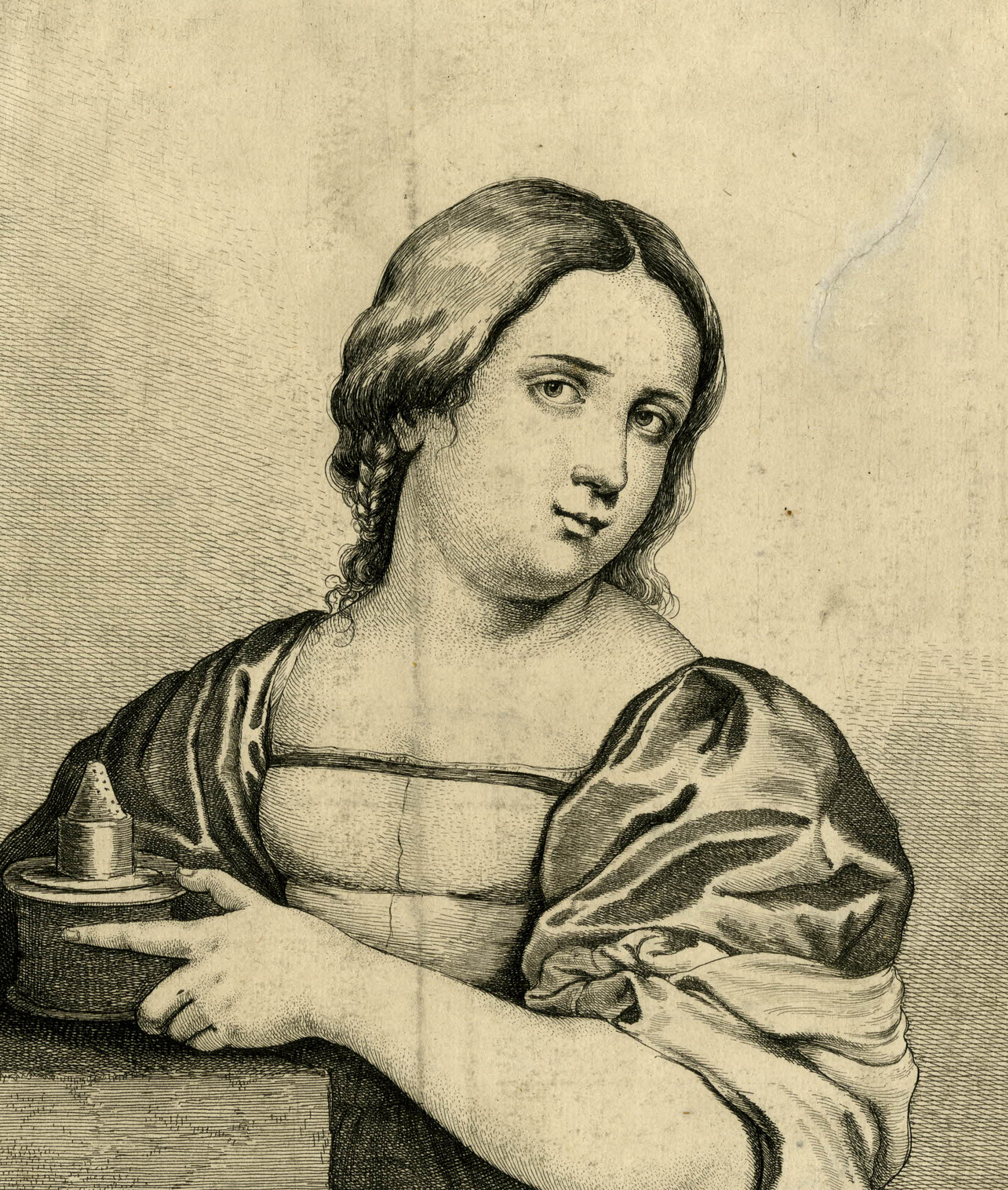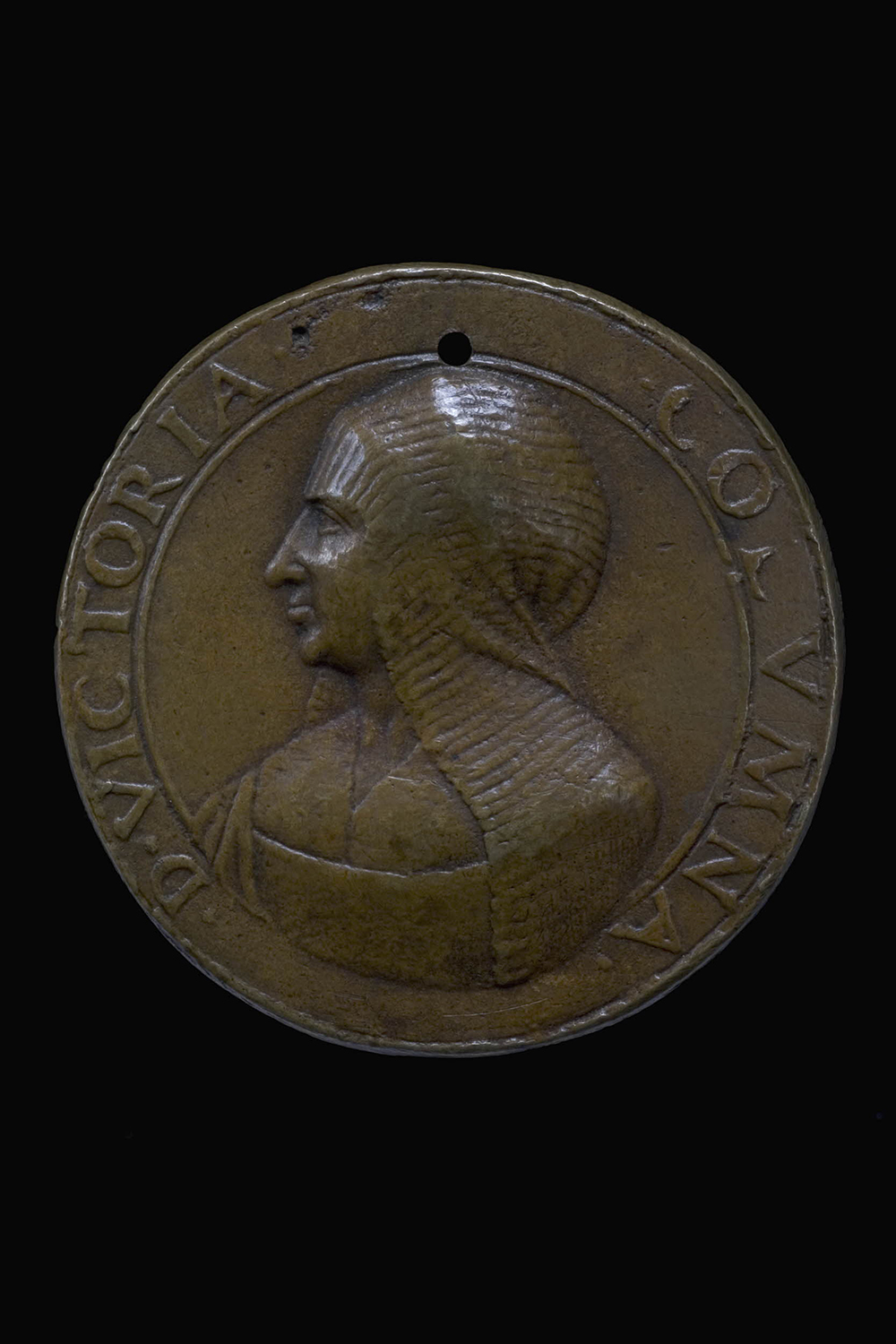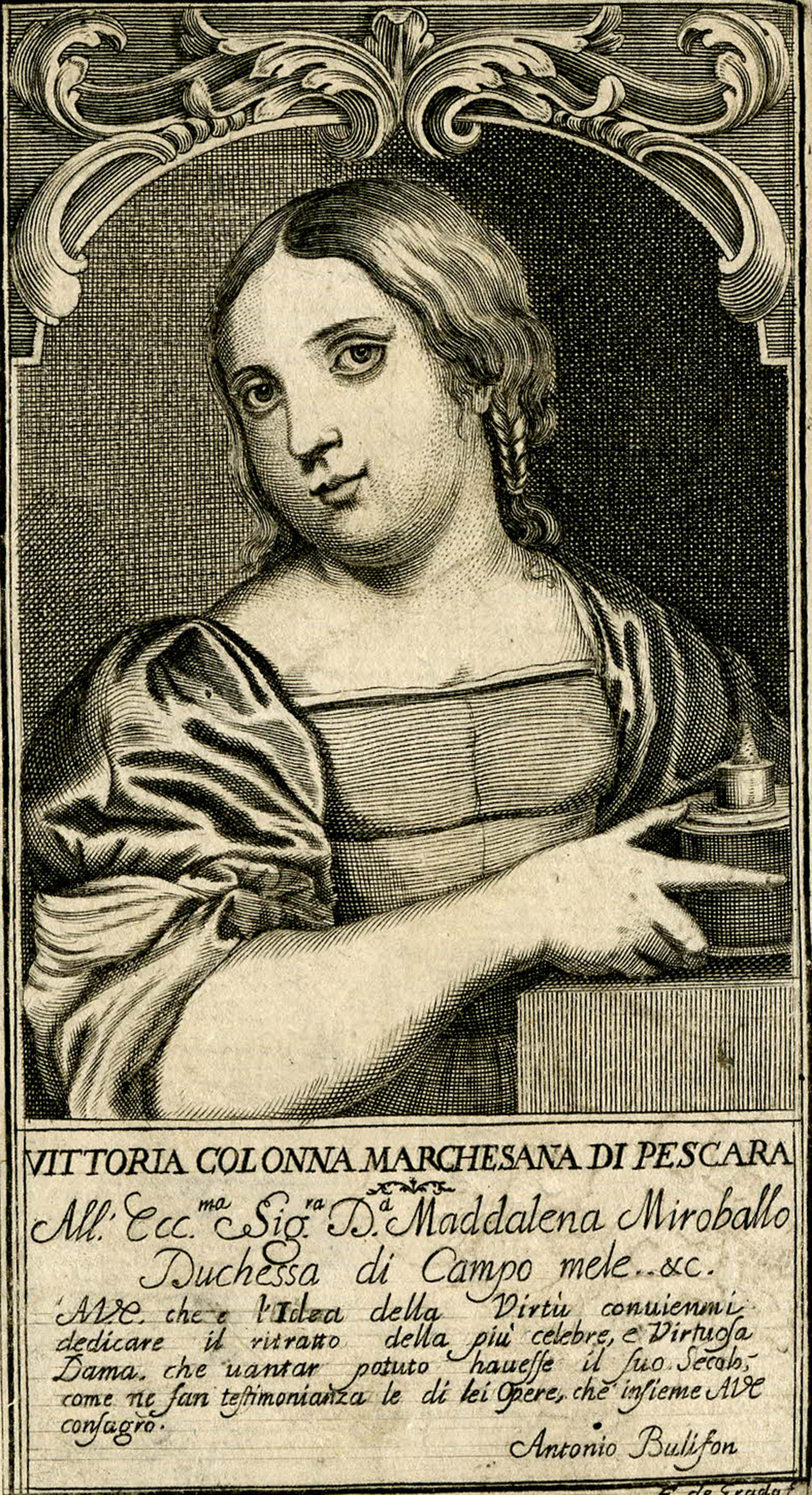
Vittoria Colonna, by Wenceslaus Hollar, 1650. The British Museum.
High in the hills thirty miles to the east of Rome is the ancient town of Subiaco. It was where Saint Benedict spent three years as a hermit in a cave before founding his first monastic community on the site in the early sixth century. Looking as if it had been carved directly into the cliffs, the monastery of San Benedetto lies at the top of a very long, treacherously narrow drive lined with beautiful woods.
Just down the hill from the Benedictine monastery on the same winding road is a second monastery, dedicated to Benedict’s sister, Saint Scholastica. The monastery was renowned in the Middle Ages for its library, which had a famous scriptorium—a separate room where monks copied manuscripts—and it held ten thousand volumes by the year 1300. It was in the library of Saint Scholastica that Italy entered the world of print: in 1464 two German clerics, Arnold Pannartz and Konrad Sweynheym, crossed the Alps to set up a printing press in Subiaco, where they began to produce books using a technology that soon made the scriptorium obsolete. It was also in this celebrated library—now located in a different part of the monastery—that I found myself on a sweltering summer day several years ago, facing a Benedictine monk who was handing me a file of precious letters and documents from the early 1500s. I had come to consult the archive of the Colonna family, which has been housed in Subiaco since 1996, when it was moved from Rome.
My interest was in the poetry of one member of the family, Vittoria Colonna, who lived from 1490 to 1547. Among her many accomplishments, Vittoria was the very first woman in all of Italy to have a book of her poems appear in print. I had discovered her work while writing a book on Renaissance love poetry, and had been struck by the hundred or so sonnets that she addressed to her husband after his death. Given their emotional power and complexity, I was surprised to learn that she had subsequently abandoned love poetry altogether, and chosen to write only spiritual verse. In the sixteenth-century Italian books of her poetry that I had read at Harvard’s Houghton Library—there are no complete translations of her poems available in English, and the only Italian edition, published in 1982, is out of print—I noticed that in the illustration on the title page of one edition she looked very much like a nun. I also noticed she was consistently called “divine.” All of this intrigued me, and when I was in Rome some months later and learned that many of Vittoria’s original letters were in a nearby archive, I decided to make the trip.
There is no published or digital catalog of the Colonna archive, so I did not know exactly what I was looking for. But there was a rather primitive database on the library’s computer, and I was able to do a search for Vittoria. Two different call numbers came up, which I jotted down on a slip of scrap paper. The monk who had showed me into the room promptly copied the two numbers onto the palm of his hand—I offered to give him my piece of paper, but he said he preferred his method—and he disappeared into the archive. Some fifteen minutes later, he returned with two files.

What I found in those files gave me my first glimpse of the extraordinary life Vittoria had led. I read her scribbled notes to her brother Ascanio about his fight with Pope Paul III over taxes on salt, and to her nephew Fabrizio about Ascanio’s difficulties with the princess of Sulmona. I pored over her letter to the padre generale of the Capuchin monks urging him to treat the friars well and not serve them a low-quality bread, given how little they ate, and her response to the constables of the Colonna fief of Monte San Giovanni instructing them not to comply with the new system of taxation that the papal commissioner was trying to introduce. I found three pages from her personal account book, listing payments made and monies received for 1543 and 1544. I studied the inventory that her executor drew up the day after her death in 1547, listing the items left behind in her rooms at the nunnery in Rome where she had been living—I was particularly struck by the poignant mention of a single gold spoon. I read an irate letter from the same executor to her brother announcing his horror about the disposition of her wealth.
After I went through the quite substantial stack of letters—carefully taking photographs, with the monk’s permission, so that I could study them con calma, as the Italians say, later on—I closed up the file and turned to the bound manuscript. Inside this rather grandiose volume filled with miscellaneous legal materials related to the Colonna family was the most elegant document I had seen so far: the wedding contract between Vittoria and her husband, Ferdinando Francesco I d’Avalos, Marquis of Pescara. The contract was drawn up in Naples on June 13, 1507, when Vittoria and Ferrante (as Ferdinando was known) were both around seventeen years old. Toward the end of the wedding contract I found a long list of the witnesses who were present at the signing. There were two princes, three dukes, two counts, one military captain, one bishop, and a number of ordinary citizens; all of them were men. The only woman who seemed to have been included was Ferrante’s guardian, Costanza d’Avalos, Duchess of Francavilla, who had raised him since early childhood following the death of his parents. Costanza was one of the three signatories to the contract, along with Ferrante and Fabrizio. From my preliminary glance at the document, Vittoria played no part at all.
I left the archive in Subiaco that day with the desire to know much more about what I had seen—about the marriage between Vittoria and Ferrante, about her relations with her family, about her interactions with the world. I started to seek answers by reading what I could about Vittoria’s life. This proved oddly frustrating. For such a celebrated woman—according to the great nineteenth-century historian of the Renaissance Jacob Burckhardt, she was “the most famous woman of Italy”—there was startlingly little written about her. I decided to tell her story myself.
The first thing I did was to map out the places Vittoria had lived and to try to visit them all. This proved more demanding than I could possibly have imagined, because she was unusually mobile for a woman of her period and class. Vittoria was born in the town of Marino, one of the Colonna’s feudal holdings outside of Rome, where she lived in a heavily fortified castle. When her father became Grand Constable of the Spanish-run kingdom of Naples, the family moved to Naples, where they had a beautiful palace in the heart of the city. Upon marrying, she and her husband took up residence on the island of Ischia in the castle that belonged to his family, and also maintained a palace of their own in Naples. After Vittoria became a widow at the age of thirty-five, she lived for a short time in Rome, then moved back to Marino, and ultimately returned to Ischia, where she stayed for the better part of six years. After this time, she led a very itinerant existence. Vittoria always came and went from Rome but spent long stretches of time in the cities of Ferrara, Orvieto, and Viterbo. In each of these places, she lived as a lay guest in a convent.

Over the course of a few years, which included a sabbatical in Rome, I traveled to every single place that Vittoria had lived. Between trips to these often rather remote locations—there is no train service to almost any of Vittoria’s homes—I worked in the various archives that held her papers. I spent time in the manuscript room of the Vatican Library with the poems she gave to Michelangelo, and in the Laurentian Library in Florence, wearing thick gloves, with a manuscript copy of the poems given by Vittoria’s secretary to Marguerite d’Angoulme, queen of Navarre. I returned on multiple occasions to Subiaco. Most of my time was spent studying the several hundred letters—both in manuscripts and in the printed Italian volume from the late nineteenth century—that have survived of her correspondence. Very few of these letters had ever been translated into English, and a certain number of them had never been transcribed from their original handwritten form.
After all of my traveling around Italy, deciphering Vittoria’s manuscripts and translating her letters and poems, a portrait of a fascinating person emerged. Here was a woman graced with all of the privileges the Renaissance had to offer. She came from one of the most powerful families in all of Italy, was extremely well educated, and had many castles. She had made an important marriage with the heir to one of the ruling Spanish families in the kingdom of Naples. She was a very talented poet and wrote beautiful sonnets that brought her great fame. She lived an immensely glamorous life as a young woman, regularly attending parties with royalty from all of Europe. She commissioned paintings from Michelangelo and Titian, and was on a first-name basis with the Holy Roman Emperor. At the same time, Vittoria was a solitary person, who in her heart eschewed money and fame. She was profoundly religious and, once widowed, wanted to spend as much time as she could living alongside nuns. She was also adventurous in her faith and, despite her strong Catholic roots, became a firm believer in some of the core tenets of Protestantism. She resisted remarriage but developed very deep attachments, sometimes bordering on obsessions, with a number of charismatic men. She loved her family, and was loyal to her brother through his many political struggles at the same time that she avoided living with him or her other relatives whenever possible. She starved and beat herself as part of her religious penance, but also believed in her own election as one of God’s chosen few. No sooner did I think I had her pegged than she slipped from my grasp. There are still holes in Vittoria’s archive—letters that have not been found, events that cannot be verified, conversations that left no traces. But enough has remained to conjure her up. As we begin to understand not only her extraordinary accomplishments as a poet and writer, but also her complexity as a person, we see in a new light what made the historical moment in which she lived so remarkable. For Vittoria embodied in a single person—in a single woman—many of the qualities that make this period so different from any other; she captured its simultaneous magic and strangeness. In our learning about Vittoria Colonna, the Renaissance comes to life anew.
Excerpted from Renaissance Woman: The Life of Vittoria Colonna by Ramie Targoff. Published by Farrar, Straus and Giroux on April 17, 2018. Copyright © 2018 by Ramie Targoff. All rights reserved.